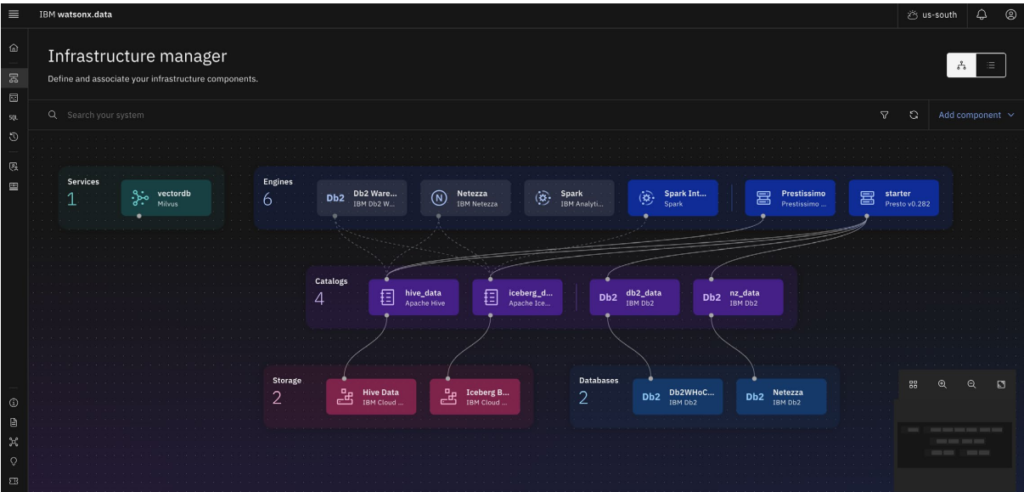How to Prepare Enterprise Data for AI Success: A Practical Framework for Leaders

The AI Readiness Wake-Up Call
Is your organization’s data truly ready for artificial intelligence?
It’s a question many enterprise leaders assume has an obvious answer—until AI initiatives stall, models fail to scale, or compliance issues surface. In the rush to adopt AI, the foundational requirement of data readiness is often underestimated. Yet without structured, secure, and trustworthy data, even the most advanced AI systems are rendered ineffective.
This post offers a comprehensive framework to help you assess and elevate your organization’s data maturity to meet the demands of modern AI. Drawing from real-world case studies, industry benchmarks, and insights from IBM’s enterprise solutions, we’ll explore the technical, governance, and strategic dimensions of AI data readiness. From resolving data silos to embedding observability, this guide empowers you to build an AI-ready data ecosystem—one that fuels innovation while remaining resilient, compliant, and scalable.
Section 1: The Hidden Hurdles of AI Adoption – Key Challenges in Data Readiness
Despite the buzz surrounding AI, many enterprises face fundamental obstacles that jeopardize success long before model deployment:
1. Fragmented Data Environments
Enterprises often manage data across disconnected systems—on-premises databases, cloud storage, third-party APIs—making unified access difficult. This fragmentation undermines data discoverability, consistency, and trust, especially when scaling AI solutions across business units.
2. Poor Data Quality and Visibility
AI thrives on clean, complete, and timely data. Yet many organizations lack mechanisms to monitor data quality across pipelines. According to Gartner, undetected schema changes, null values, or outliers silently erode model accuracy and increase operational risk.
3. Inadequate Lineage and Governance
Without traceability, it's nearly impossible to understand how data was sourced, transformed, or validated—leaving teams vulnerable to compliance violations under GDPR, CCPA, and other data privacy regulations.
4. Security Risks in Distributed Systems
AI systems often process sensitive or regulated data in hybrid and multi-cloud environments. Traditional perimeter-based security models fall short here. Organizations need persistent, data-centric controls that secure information regardless of its location.
5. Lack of Strategic Ownership
Data initiatives often suffer from vague accountability. Without clear ownership, it’s hard to enforce service levels, ensure consistency, or respond quickly to changing business needs.
Section 2: Architecting Trust – Strategic Insights to Overcome Data Readiness Gaps
To meet these challenges, industry leaders are implementing foundational shifts in how data is governed, observed, and utilized:
1. Embrace Data Fabric Architecture
A data fabric provides a unified, intelligent layer that connects data across environments. It automates integration, orchestrates access policies, and applies AI/ML to discover and catalog datasets in real time—making data available where and when it’s needed for AI workloads.
2. Implement Data Observability
Rather than monitoring systems, data observability monitors the health of the data itself. This includes freshness, volume, schema consistency, and lineage. Enterprises with strong observability resolve issues faster and maintain trust in model outcomes.
3. Prioritize Data Lineage and Traceability
Clear documentation of data flow—where it originates, how it transforms, who accessed it—enables compliance, impact analysis, and operational reliability. Automated lineage tools are now used by over 60% of large enterprises to reduce audit risk and improve governance.
4. Shift to Data-as-a-Product Thinking
By treating datasets like products—with dedicated owners, user feedback loops, service-level objectives (SLOs), and lifecycle management—enterprises enhance usability and quality. This model fosters accountability and aligns data output with business needs.
5. Adopt AI Governance
AI governance ensures ethical, transparent, and compliant deployment of AI systems. It aligns model development with legal standards and public expectations—critical as regulations like the EU AI Act continue to evolve.
Section 3: Case Study – IBM’s Blueprint for AI-Ready Data
IBM has played a pivotal role in helping enterprises modernize their data foundations for AI. Here’s how:
Technology Enablement:
IBM’s data fabric solutions unify structured and unstructured data across hybrid environments. Clients can leverage metadata-driven automation and semantic knowledge graphs to discover, classify, and prepare data for AI in real time.
Operational Excellence:
Using IBM’s observability tools, clients can proactively detect anomalies in data pipelines, identify root causes, and ensure uninterrupted AI operations. These features have enabled some clients to reduce data pipeline downtime by up to 40%.
Security and Compliance:
IBM embeds data-centric security controls—like encryption, access management, and tokenization—directly into data workflows, protecting sensitive information throughout its lifecycle and across borders.
Leadership and Process Maturity:
IBM helps organizations shift to data product models, complete with product owners, cross-functional teams, and agile governance practices. These transformations shorten time-to-insight and boost data consumer satisfaction.
AI Governance and Trust:
IBM’s frameworks for responsible AI development—including explainability, risk management, and audit trails—support clients in building trustworthy, regulation-ready systems.
Section 4: Turning Strategy into Action – Practical Steps to Prepare Your Data for AI
Short-Term Recommendations (0–6 months):
- Assess Data Maturity: Evaluate current gaps in quality, security, and governance.
- Implement Data Observability: Start monitoring key data quality metrics (freshness, volume, schema).
- Identify Critical Use Cases: Prioritize AI projects that depend on reliable data.
- Catalog and Classify Assets: Use metadata tools to build a central inventory of data sources.
- Assign Ownership: Establish data product owners for high-value datasets.
Mid-to-Long-Term Strategies (6–24 months):
- Deploy Data Fabric Architecture: Integrate fragmented sources into a unified, automated data layer.
- Embed Lineage and Governance: Invest in tools that provide end-to-end data traceability and regulatory compliance.
- Transition to Data-as-a-Product: Apply lifecycle management, user feedback loops, and quality metrics to your most used datasets.
- Strengthen Data-Centric Security: Protect data across all environments with persistent, policy-based controls.
- Operationalize AI Governance: Create cross-functional governance councils and embed compliance checkpoints into AI lifecycles.
Conclusion: Building a Resilient Data Foundation for AI
Preparing your data for AI isn’t just a technical requirement—it’s a strategic imperative.
Organizations that neglect foundational data readiness risk costly delays, compliance breaches, and failed AI initiatives. In contrast, those who invest in modern architectures, product-oriented data governance, observability, and security frameworks position themselves to scale AI with confidence.
The path to AI success begins with data you can trust, govern, and leverage at scale. With the right strategies in place—and the right partners like IBM—it’s a journey well within reach.
Call to Action: Stay Ahead in the AI Readiness Journey
Ready to future-proof your data strategy for AI? Subscribe to our newsletter for expert insights, real-world use cases, and the latest in enterprise data innovation. Join a growing community of leaders shaping the next era of AI-driven business.
References
- https://www.gartner.com/en/information-technology/glossary/data-fabric
- https://www.forrester.com/report/the-forrester-wave-enterprise-data-fabric-q1-2024/RES178691
- https://www.ibm.com/topics/data-lineage
- https://www.montecarlodata.com/data-observability/
- https://www.enisa.europa.eu/publications/data-centric-security-in-ai
- https://digital-strategy.ec.europa.eu/en/policies/european-approach-artificial-intelligence
- https://www.oreilly.com/library/view/data-observability-for/9781098136552/
- https://doi.org/10.1016/j.datak.2023.101234
- https://datameshlearning.com/
- https://www.oecd.org/going-digital/ai/principles/


